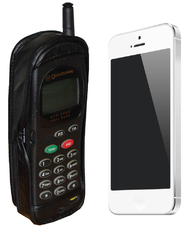Looking for Something?
| Word Tips |
| Excel Tips |
| Outlook Tips |
| PowerPoint Tips |
| Windows Tips |
| Hardware Tips |
| Internet Tips |

Pick a Tip:
| < prev | next > | |||
|---|---|---|---|---|
| 1 | 2 | 3 | 4 | 5 |
| 6 | 7 | 8 | 9 | 10 |
| 11 | 12 | 13 | 14 | 15 |
| 16 | 17 | 18 | 19 | 20 |
| 21 | 22 | 23 | 24 | 25 |
| 26 | 27 | 28 | 29 | 30 |
| 31 | 32 | 33 | 34 | 35 |
| 36 | 37 | 38 | 39 | 40 |
| 41 | 42 | 43 | 44 | 45 |
| 46 | 47 | 48 | 49 | 50 |
| 51 | 52 | 53 | 54 | 55 |
| 56 | 57 | 58 | 59 | 60 |
| 61 | 62 | 63 | 64 | 65 |
| 66 | 67 | 68 | 69 | 70 |
| 71 | 72 | 73 | 74 | 75 |
| 76 | 77 | 78 | 79 | 80 |
| 81 | 82 | 83 | 84 | 85 |
| 86 | 87 | 88 | 89 | 90 |
| 91 | 92 | 93 | 94 | 95 |
| 96 | 97 | 98 | 99 | 100 |
| 101 | 102 | 103 | 104 | 105 |
| 106 | 107 | 108 | 109 | 110 |
| 111 | 112 | 113 | 114 | 115 |
| 116 | 117 | 118 | 119 | 120 |
| 121 | 122 | 123 | 124 | 125 |
| 126 | 127 | 128 | 129 | 130 |
| 131 | 132 | 133 | 134 | 135 |
| 136 | 137 | 138 | 139 | 140 |
| 141 | 142 | 143 | 144 | 145 |
| 146 | 147 | 148 | 149 | 150 |
| 151 | 152 | 153 | 154 | 155 |
| 156 | 157 | 158 | 159 | 160 |
| 161 | 162 | 163 | 164 | 165 |
| 166 | 167 | 168 | 169 | 170 |
| 171 | 172 | 173 | 174 | 175 |
| 176 | 177 | 178 | 179 | 180 |
Technology Tip Number 18
|
||||||||||||||||||||||
|---|---|---|---|---|---|---|---|---|---|---|---|---|---|---|---|---|---|---|---|---|---|---|
First, before we even talk about different kinds of cell phones, lets look at some numbers:
As you can tell from the highlighted numbers above, to talk about modern technology and not talk about mobile phone technology at all would be pointless. So here are some basic things everyone should know about mobile phones. A Little History: Cell phones as we know them today have been in development since at least the late 1940's and the technology developed simutneously all around the world. Most of these early phones were operated out of a vehicle. By 1973 the Motorola Company was ready to develop the first handheld mobile phones in the United States. These early mobile phones are popularly know as "Brick Phones" today. Learn more about that first cell phone and the phones that followed here. 1G, 2G, 3G, 4G: The first analog cell phone systems were introduced in the U.S. in 1978, Isreal in 1986 and Australia in 1987. This first generation system would become known as the 1G network. In the 1990's a second generation mobile phone system was developed (2G). Within the new 2G system there was worldwide competition between the CDMA network that was developed in the U.S. and the GSM network that was developed in Europe. By the end of the 1990's a new cellular system was needed to handle data downloads and internet access. In 2001 a 3rd generation (3G) was launched in Tokyo, Japan followed by 3G network launches in the U.S. and Europe. By 2009 it became clear that existing 3G networks would become overwhelmed by the increasing volume of cell phones so a new 4th generation (4G) network was developed that could transmit data up to 10 times faster than the existing 3G network. More information here and here.
|
||||||||||||||||||||||
PRACTICE ACTIVITY: If you have one of the 6 billion plus cell phones that are one this planet make sure you give yourself at least 10 minutes today to just explore the settings on it. Chances are there are plenty of things your phone can do that you don't even know about. TO KEEP ON LEARNING: If you'd like to learn more about smart phones try searching the internet for: Smart phone history |
||||||||||||||||||||||
Looking for Something? |





 Is it a Smart Phone or a Dumb Phone?: The first mobile phones were just for making calls and they remained as such well into the 1990's. Simultaneously
Is it a Smart Phone or a Dumb Phone?: The first mobile phones were just for making calls and they remained as such well into the 1990's. Simultaneously